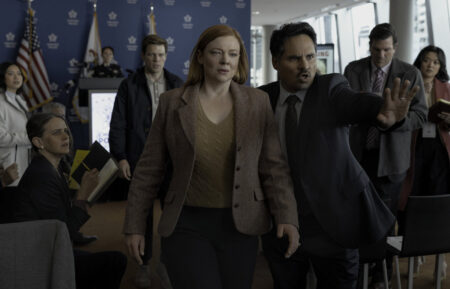7 Vince Gilligan Episodes to Watch Before ‘Pluribus’ (PHOTOS)
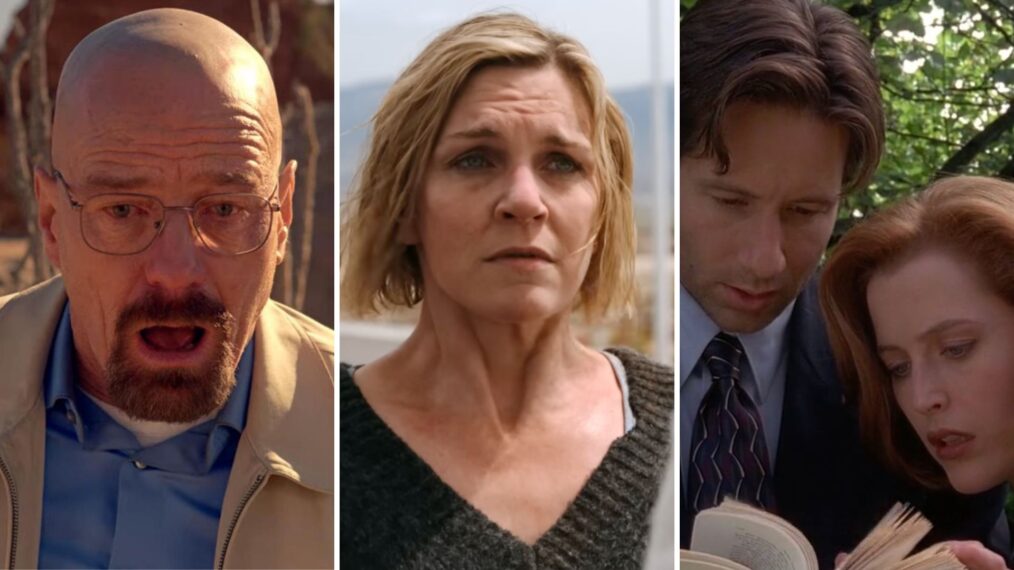
With Vince Gilligan‘s newest show, Pluribus, releasing on Friday, November 7, on Apple TV, many excited fans have been wondering what to expect from the show. The trailer and teasers have revealed some information, but much remains a mystery. As of now, we know that the show is a science fiction drama about a utopian world in which everyone seems to be happy. However, miserable protagonist Carol (Rhea Seehorn) sees through this supposed facade, and it may be up to her to save the rest of the world from this disease of happiness.
Viewers can get a sense of Gilligan’s style and dramatic tone as a creator in preparation for Pluribus by watching some of the work he has previously worked on, including Breaking Bad, Better Call Saul, and The X-Files. Here are some of our favorite episodes from the creative mind of Gilligan.
Pluribus, Series premieres November 7, Apple TV+

"Pilot," Breaking Bad (Season 1 Episode 1)
What would a good list of Gilligan recommendations be without Breaking Bad? Set in New Mexico, this five-season drama follows the arc of high school chemistry teacher turned drug lord Walter White (Bryan Cranston) as he navigates life after receiving a cancer diagnosis and begins selling methamphetamine.
The pilot episode of the series is particularly good. It begins with an intense scene of Walter racing an RV through the desert, but it’s not quite yet clear why. He then leaves what seems to be a final message to his family — is this it already? We hear sirens approaching in the distance. Walter grabs a gun, points it, and… cut. The episode jumps back in time, and we are left to find out how Walter got to that point.
It’s apparent from Breaking Bad that Gilligan loves a gradual character arc, and with Pluribus already renewed for a second season, it’s possible that Gilligan has another long arc in store for us. Although Pluribus‘ science fiction drama genre doesn’t quite mirror Breaking Bad, they both explore darker themes through their world-building.
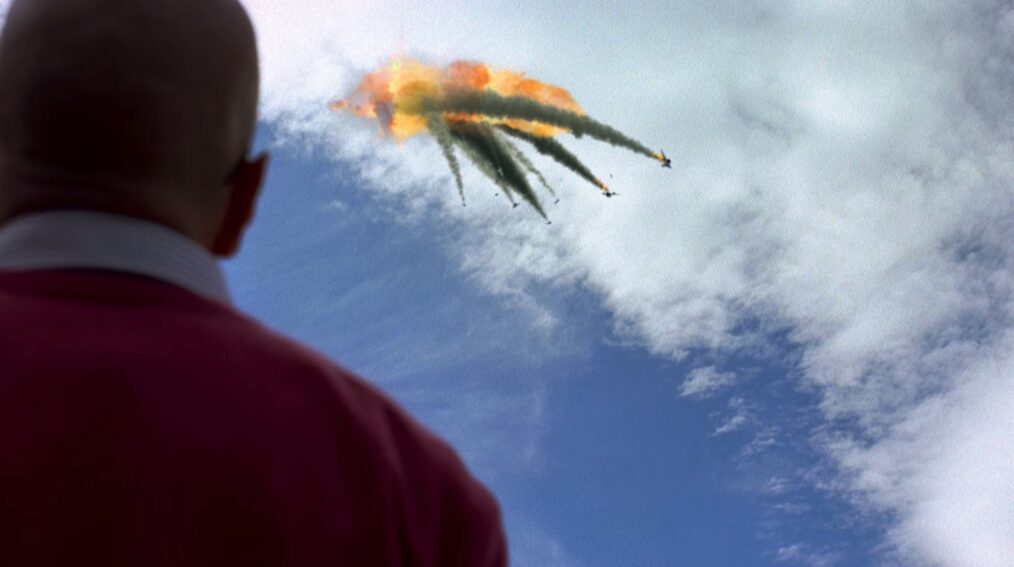
"ABQ," Breaking Bad (Season 2 Episode 13)
In Walter’s backyard, everything is black and white, except for a vibrant pink teddy bear drowning in the pool. Sirens wail in the distance. Someone fishes the teddy bear out, and it is placed into an evidence bag. Two body bags sit in Walter’s driveway. The teddy bear and other evidence are wheeled away. Then, again, we jump back in time, and the teddy bear is left as a mystery until the end of the episode.
Throughout ABQ, the audience traces the series of events that lead to the teddy bear in Walter’s pool. Gilligan uses this tactic to emphasize the significance of certain events, no matter how small they may seem. Suddenly, we are paying attention to every detail, no matter how absurd their connection may seem, contributing to the overall unease of the show.
The web of Pluribus is sure to unfold in a similar anxiety-inducing vein if it’s anything like Gilligan’s past work.
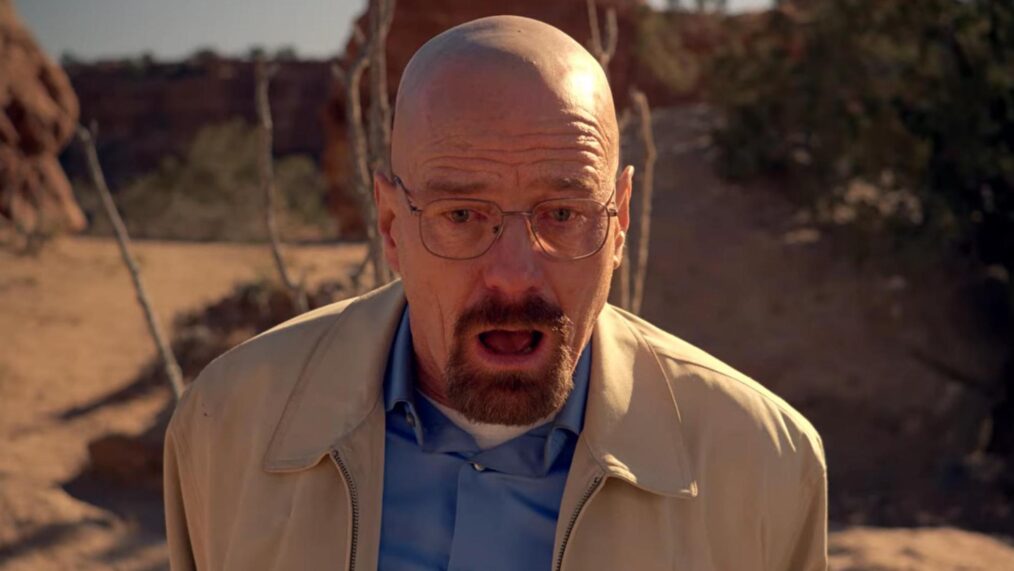
"Ozymandias," Breaking Bad (Season 5 Episode 14)
We are back in the RV in the middle of the desert with Walter and his partner in crime, Jesse Pinkman (Aaron Paul), but things aren’t quite right. For one, Walter has hair again. He calls his wife, Skyler (Anna Gunn), and their conversation makes it clear that this isn’t present-day Breaking Bad anymore, but rather a flashback to the first season. Walter, Jesse, and the RV fade away, only to be replaced by the sound of gunshots; Walter’s brother-in-law, Hank Schrader (Dean Norris), is in the midst of a shootout in the same desert from earlier.
Over the course of the episode, we see just how much Walter’s character has changed in comparison to the first season, but it is that initial flashback transitioning into the present day that makes the evolution of Walter feel even heavier.
Gilligan often utilizes time jumps throughout the show in order to drop hints or create more of an emotional impact on his audience, which is a style we hope to see in Pluribus as well. This keeps us engaged as we try to piece together the puzzle that Gilligan has created.
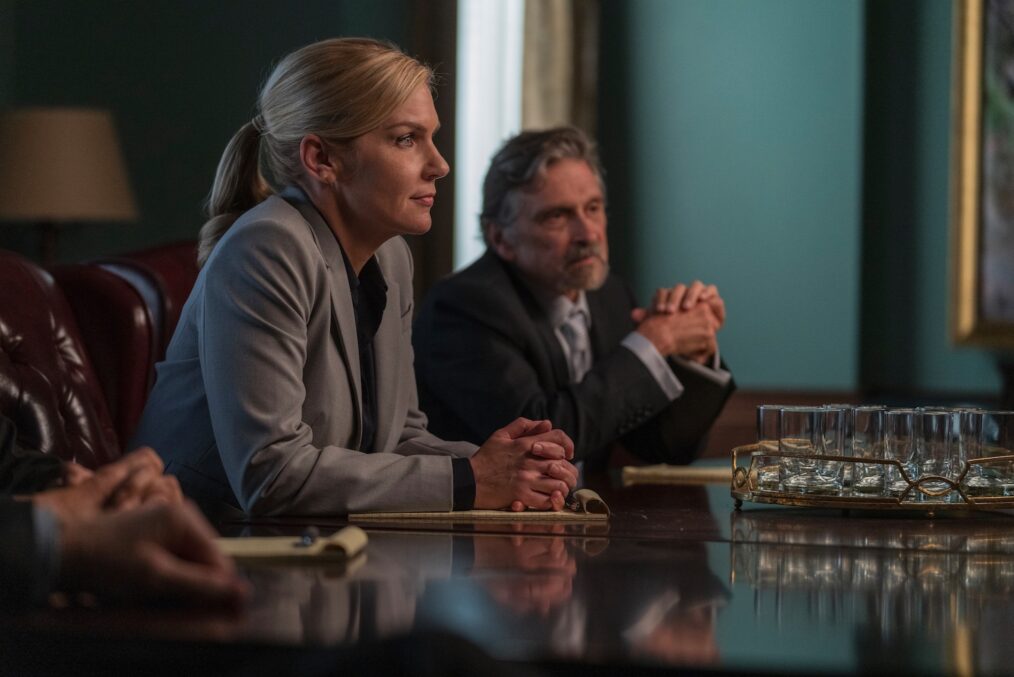
"Wexler v. Goodman," Better Call Saul (Season 5 Episode 6)
If there’s one thing Gilligan loves, it’s New Mexico. Set in the world of Breaking Bad, Better Call Saul serves as a prequel and spinoff to the original series, giving us a look into the life of lawyer Saul Goodman (Bob Odenkirk) before he met Walter White. Saul is a criminal lawyer, in one way or another, but as Saul gives in to his urges to take “shortcuts,” he drags fellow lawyer Kim Wexler (Rhea Seehorn) down with him into a world that they may be in over their heads in.
In this episode, we see a young Kim being picked up much too late from school by her drunk mother. They argue momentarily, and then Kim decides to walk home in the dark by herself, carrying a cello. This glimpse into Kim’s beginnings is short, but it still holds weight.
Gilligan magnificently fleshes out each and every one of his characters, giving them strong backstories and complicated internal struggles. Kim is one great example of this; we don’t learn everything about her at once, and five seasons in, there are still things to discover. It’s this slow process of the reveal of character that makes us truly care about these characters. Gilligan knows exactly when to divulge what information about each character.
With Pluribus taking on multiple seasons, we can expect to see not only some good character development, but also a gradual reveal of backstory. However, which characters besides protagonist Carol will be significant enough for these kinds of intricate backstories is yet to be known.
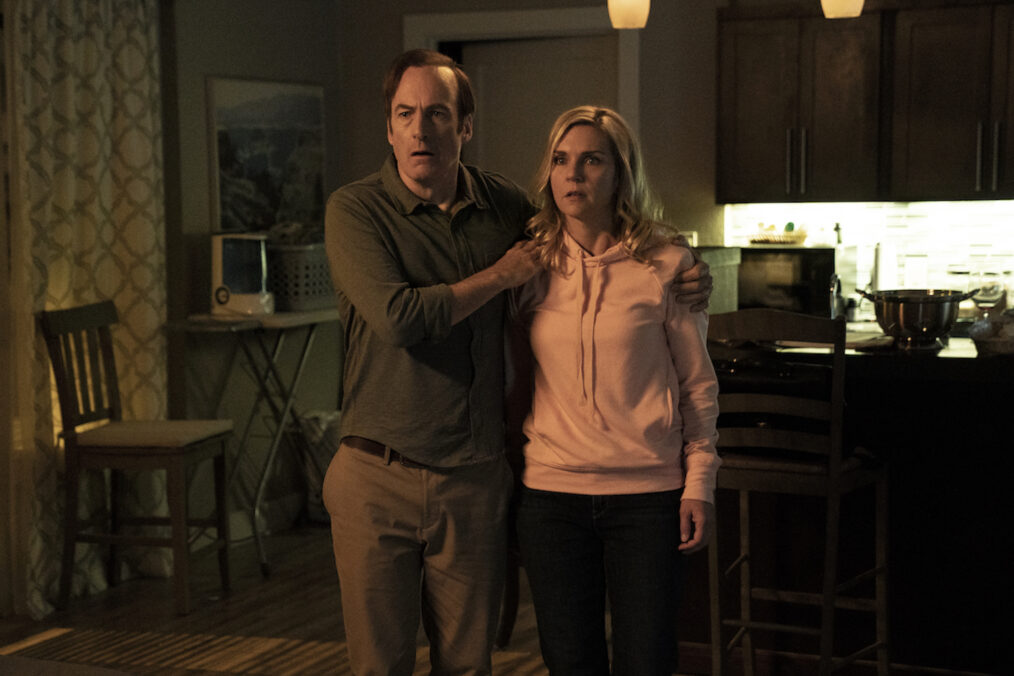
"Point and Shoot," Better Call Saul (Season 6 Episode 8)
We open at the beach. A shoe tumbles gracefully in the waves. A car sits on the shore playing classical music. The sun shines brightly. It’s a perfect beach day, but by now we know better than to trust that. Moments later, we are thrown into a much darker reality; blood covers the ground and Saul and Kim cower on the couch, completely terrified, and we see their entire world come crumbling down. It’s tragic, it’s heartbreaking, but in some ways, it almost feels deserved.
Gilligan has a knack for writing morally grey protagonists, especially in Better Call Saul. While we are still rooting for Saul, his demise is understandable, and it’s sad. Although Pluribus takes place in New Mexico and will also star beloved Rhea Seehorn, it is not set in the same world as Breaking Bad. We are hopeful that Gilligan will continue to create morally grey characters that we can both root for and disagree with, particularly with the juxtaposition of the miserable protagonist in the happy world of Pluribus.
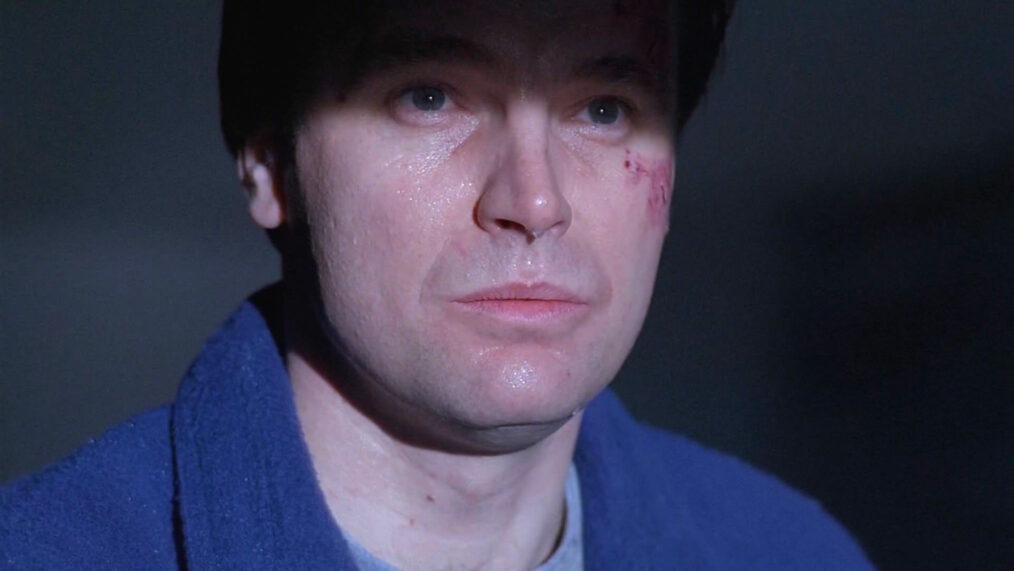
"Pusher," The X-Files (Season 3 Episode 17)
Although Gilligan was not a creator of The X-Files, he was a writer on the show, penning roughly 30 of the episodes in the series. The X-Files explores unexplainable and sometimes even supernatural events from the perspective of FBI agents Fox Mulder (David Duchovny) and Dana Scully (Gillian Anderson) as they conduct their investigations. Each episode works as a stand-alone, with Mulder typically buying into the more supernatural aspects, and Scully remaining skeptical and insistent that there is a reasonable explanation for everything.
One fan favorite from Gilligan’s work on the show is Pusher, which is about a serial killer who seems to have the capability to drive his victims to suicide. The episode begins on a light note with a man strolling through a grocery store and humming along to the music. However, moments later, the man, called Pusher (Robert Wisden), is arrested by the FBI right in the middle of the store. In a police car, Pusher uses a soothing tone to repetitively describe the gentleness of the cerulean blue color of the officer’s clothing. Suddenly, the officer pulls the car out to turn, and- BAM! There is a horrible collision.
This all happens within the first four minutes, but already, there are two tonal switches from calmness and serenity into an uneasy danger. This pattern is present in much of Gilligan’s work, utilizing opposite emotions in any way he can. Based on what we know of Pluribus so far, this pattern should continue in the supposed world of happiness against Carol’s dark skepticism.

"Paper Hearts," The X-Files (Season 4 Episode 10)
In this terrifying episode, we begin in Mulder’s dream as he follows a laser pointer in the forest to find a young girl who lays peacefully on the ground with a red heart above her chest. Asleep? Dead? We don’t know. She sinks into the ground. Mulder wakes up, sure his dream was intuitive, and in the very next scene, agents find a body exactly where Mulder saw the girl in his dream. Mulder trusting his intuition about the case is very important to this plot, and with Pluribus protagonist Carol seemingly being the only person that can save the world from its own happiness, it’s crucial that she will be able to trust her own gut.
Additionally, in much of The X-Files, there is a sense of magical realism. Gilligan’s work on The X-Files is a possible point of influence for his creation of Pluribus, which also takes place in a world not quite grounded in reality. Just as The X-Files stretches our idea of the world, so, too, will Pluribus.


